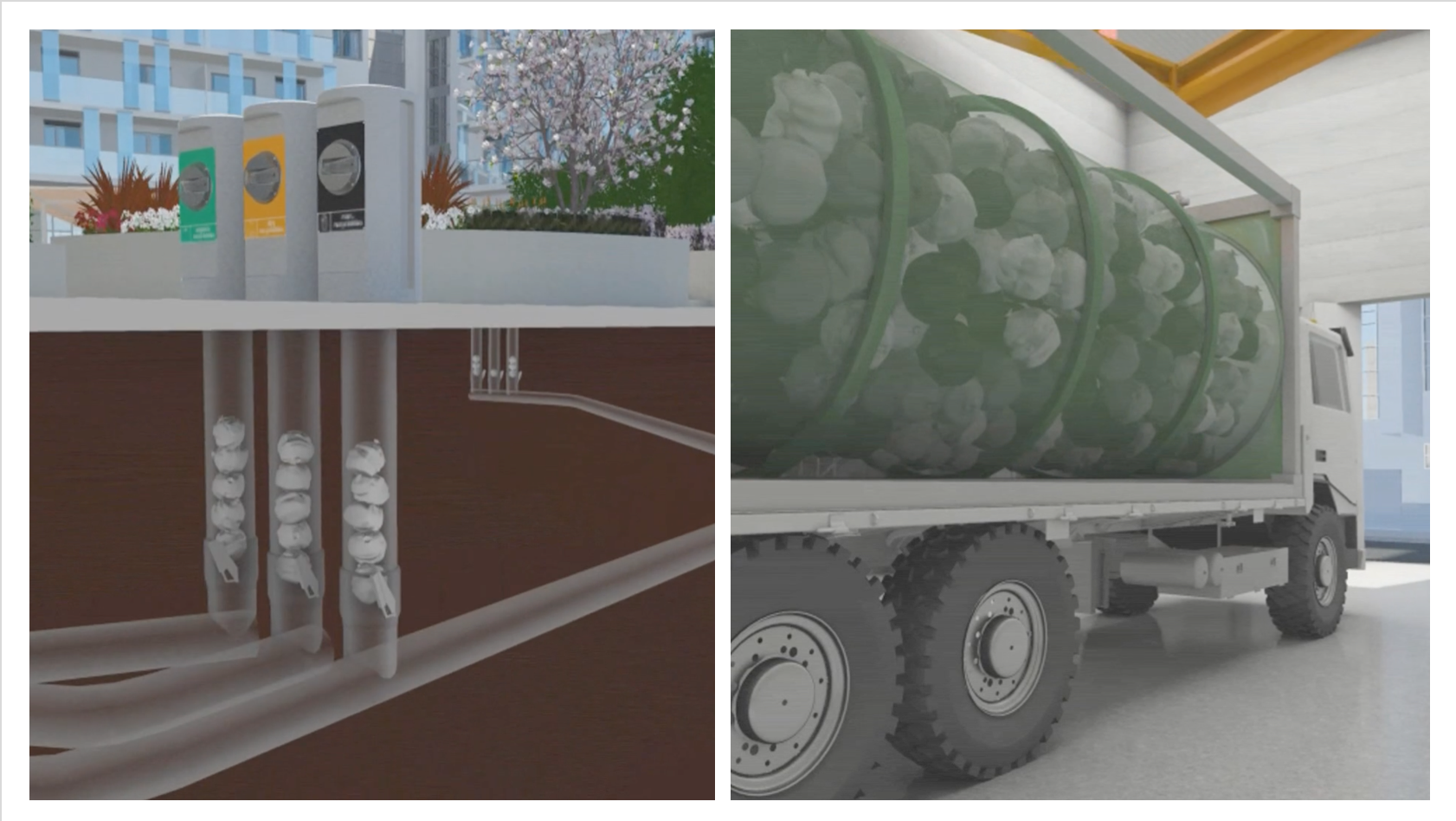There is more to the humble rubbish chute than meets the eye.
For HDB flats built before 1989, rubbish disposal chutes are installed within each flat, whereas newer flats have common rubbish chutes located at the common area on every floor.
Regardless of the location, however, the rubbish chute within our HDB flats have become a ubiquitous part of our lives.
We dump our trash into the chute without a second thought, but what happens after that?
Manual collection
Many of us would be familiar with the manual collection methods of waste disposal, involving rubbish trucks and workers who empty the trash containers by hand.
Here are some pictures from 1973:
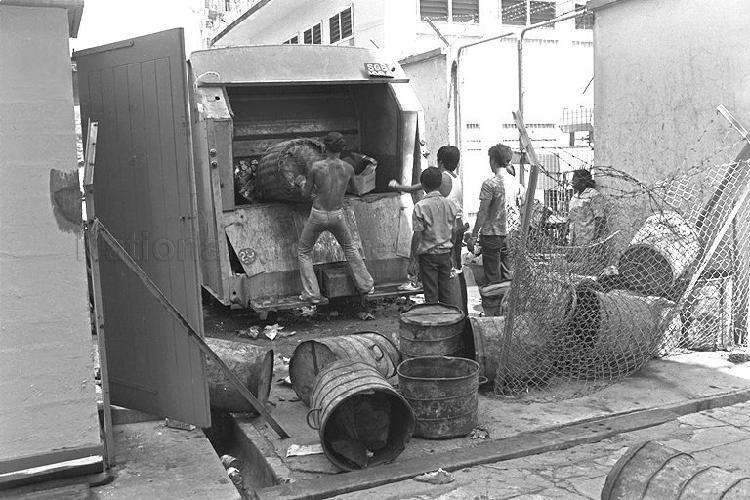 Photo from NAS.
Photo from NAS.
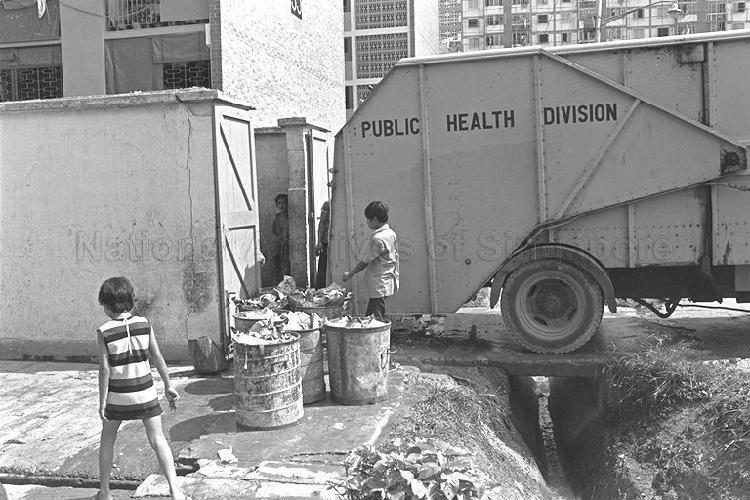 Photo from NAS.
Photo from NAS.
For HDBs, when our trash goes down the chute, they are deposited into refuse bins on the ground floor. The refuse bin from every block is manually emptied by cleaners and then transported to a bin centre.
This labour-intensive method is also known as the Individual Refuse Collection System (IRCS).
From time to time, this manual job gets even more labourious when people dispose of their rubbish anyhowly, like this HDB flat dweller:
[related_story]
Introducing the PWCS
To mitigate these problems, the Pneumatic Waste Conveyance System (also known as PWCS) was introduced in 2015.
The PWCS is more than just a fancy name. It is in fact a pretty sophisticated system.
This is how it works:
Residents throw rubbish down their chute and it goes into a refuse chamber on the ground floor.
Instead of having cleaners collect the rubbish, a sensor is triggered when the container in the refuse chamber is full.
The waste is then transported by air through underground pipes at speeds of 50-80km/h, to a central bin.
In the centralised bin, rubbish is stored in sealed containers and trucks will transport them to incineration plants when they are full.
Here is a nifty diagram of it:
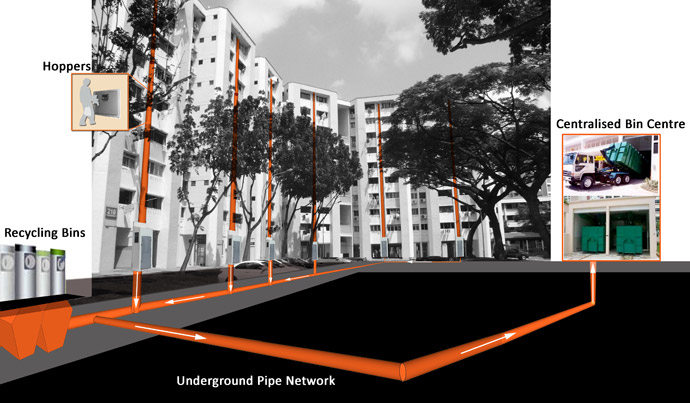 Photo from HDB.
Photo from HDB.
For this system to function effectively though, all waste thrown down the chute must be bagged, and large items such as carton boxes or long sticks are prohibited.
Benefits of the system
Because it is automated, this system reduces manpower needs by about 70%.
It is a fully sealed system, reducing foul odours, the infestation of pests, and the need for washing spillages at the chute.
The system also supports the separation of waste for recycling.
The future of our rubbish?
This system first started out in Yuhua in 2015.
Here's an artist's impression of the estate, with the top left image depicting the PWCS.
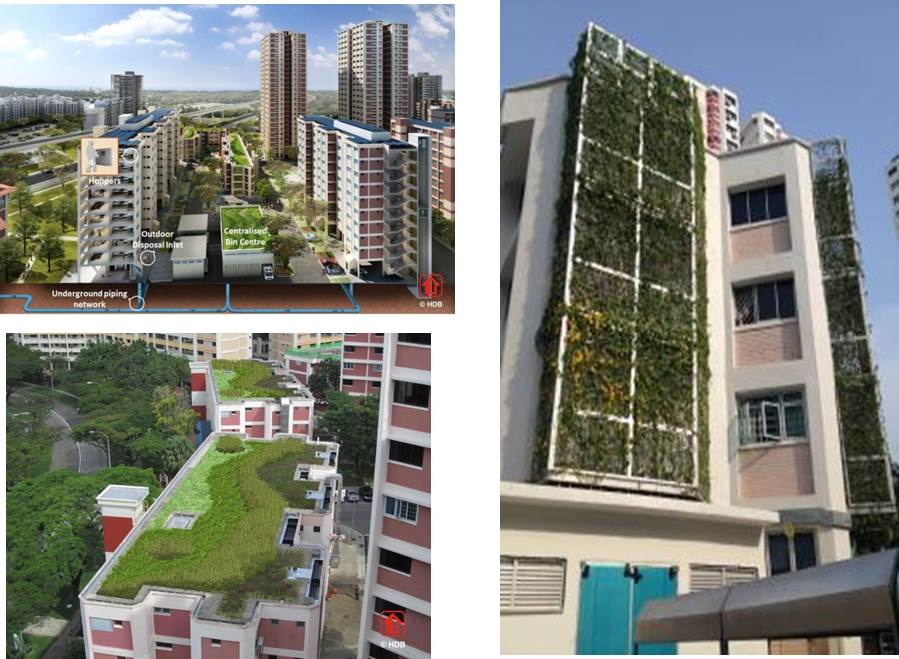 Photo from HDB.
Photo from HDB.
Presently, it has been installed in more than 100 condominiums, and will be in place in new HDB estates such as Tampines North and Bidadari.
Studies are also underway at the moment to explore the feasibility of implementing it at a district level.
Smart Nation indeed.
If you like what you read, follow us on Facebook, Instagram, Twitter and Telegram to get the latest updates.
